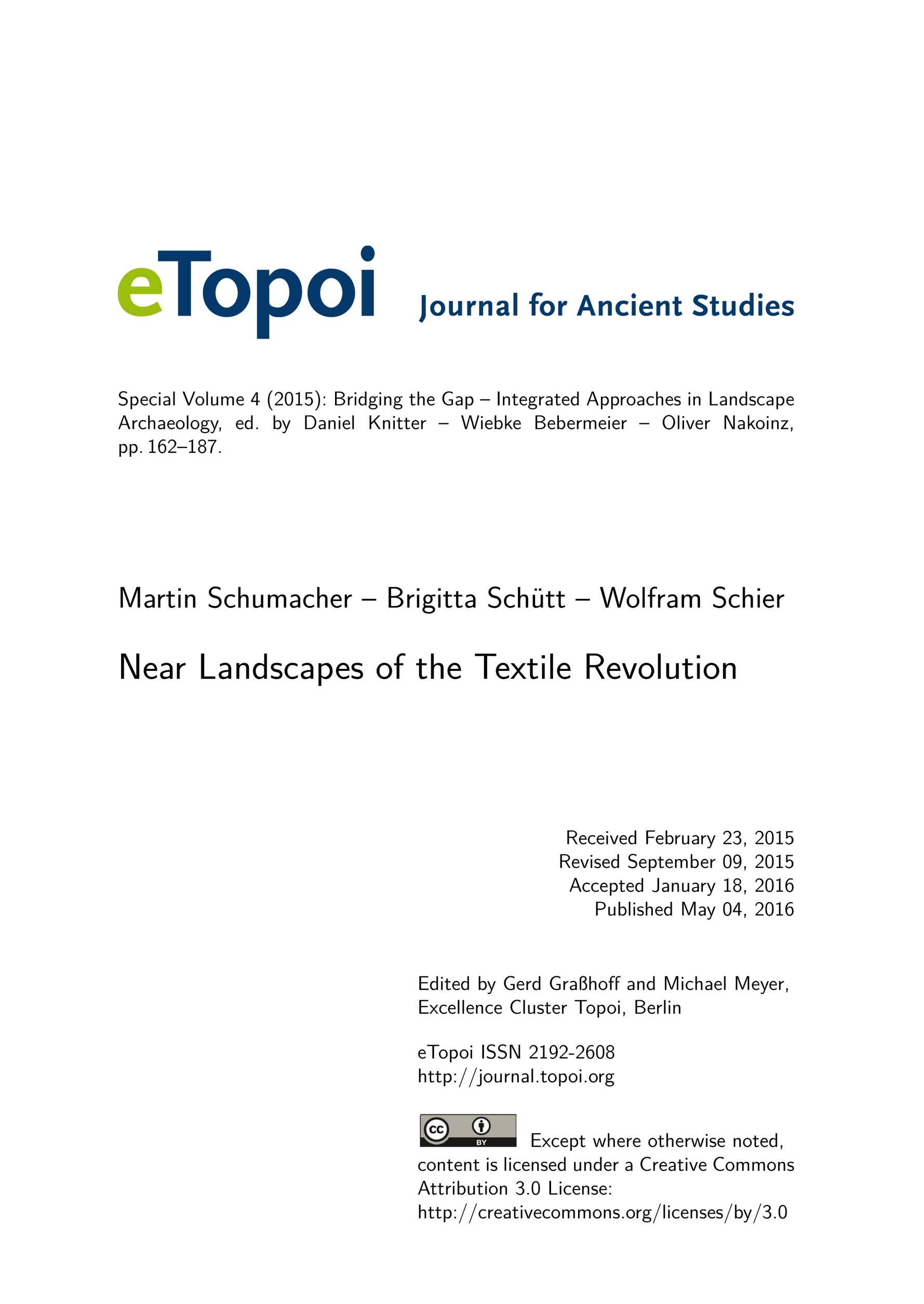Near Landscapes of the Textile Revolution
It was between the Late Neolithic and the Early Bronze Age when wool was introduced as raw material for textile production. It is expected that this innovation had a comprehensive effect on the socio-economic life of people and their environment. However, little is known about spatio-temporal trajectories of the process and the environmental influences it actually had. The approach presented demonstrates how such a comprehensive and complex research question may be operationalized. Decomposition of the overall process and gathering of information from different fields allows to reconstruct particular aspects of the phenomenon and their diachronic change. Subsequent synthesis enables addressing the overall question. This paper focuses on the role of landscape within the process of wool sheep introduction. Besides covering the particular approach to reconstruct herding-related landscape changes it is shown how deeply different disciplinary approaches are interconnected. Finally, difficulties and constraints of data integration are addressed.

